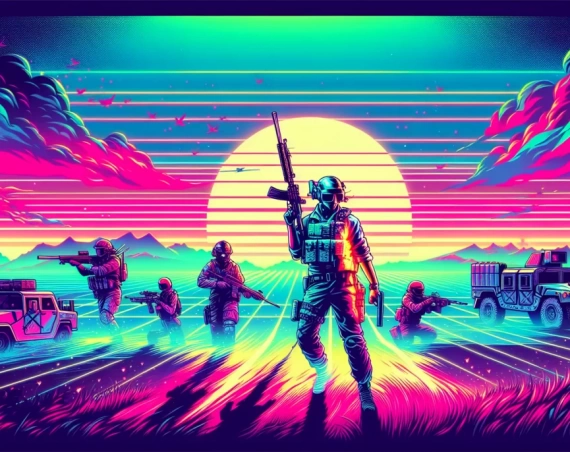
Behind the Crunch: Baldur’s Gate 2’s Grueling Development Journey
The development of classic role-playing game (RPG) Baldur’s Gate 2 by BioWare is a notable example of the challenges and pressures faced by game developers at the turn of the millennium. Despite the game’s later critical acclaim and enduring legacy, the journey to its release was marked by intense crunch, significant bugs, and difficult content cuts, reflecting broader industry trends of the era.
Introduction to Baldur’s Gate 2 and Its Ambitious Scope
Following the unexpected success of the original Baldur’s Gate, published by Interplay Entertainment in the late 1990s, BioWare embarked on developing its sequel, Baldur’s Gate 2: Shadows of Amn. The sequel was envisaged to surpass its predecessor in scale and depth, promising over 100 hours of gameplay rich with quests, lore, and intricate character development.
This ambition, however, came with substantial production challenges. Balancing the extensive scope with a timely release deadline required the development team to navigate intense demands, often resulting in overwork and pressure commonly referred to as ‘crunch.’
The Brutal Crunch: Meeting the 2000 Christmas Deadline
Feargus Urquhart, then head of BioWare’s development team under Interplay’s Black Isle division, recalled the high stakes around the game’s Christmas 2000 launch. Six months prior to release, Urquhart consulted Interplay CEO Brian Fargo to confirm the importance of the holiday deadline. Fargo’s blunt answer — implying significant job losses if the deadline wasn’t met — underscored the pressure:
“I went to Brian about six months before BG 2 was supposed to come out and asked him, ‘So how important is it that BG 2 ships for Christmas this year?’ He said, ‘Well, we might not all have jobs next year if it doesn’t.’”
Under such circumstances, the team faced relentless long hours, pushing to complete a complex and multi-faceted RPG. The crunch culture prevalent among many developers at the time meant that extended workweeks became routine despite the mental and physical toll on the team.
Impact on Development and Content
To track progress, Urquhart introduced a whiteboard system to monitor quest completion and bug testing. One board column indicated when designers declared quests ready for testing, while another confirmed when quality assurance (QA) marked them bug-free. If bugs persisted, quests were bounced back for fixes. Despite this, the looming deadline forced the team to cut substantial content, including fan-favored quests such as an entire spider cult storyline.
Designer and writer David Gaider lamented the loss of beloved content, while another team member, Lukas Kristjanson, described the crunch as “brutal.” The strain was even evident in the catering choices, progressing from repetitive Domino’s Pizza to Thai food in an attempt to boost morale. Yet, the team still felt the game was a chaotic rush toward launch.
Despite Challenges, Baldur’s Gate 2 Achieved Critical Acclaim
Contrary to the team’s grim expectations during development, Baldur’s Gate 2 launched to widespread praise and has since been enshrined as one of BioWare’s finest RPGs. The game’s expansive story, detailed world-building, and innovative gameplay set new standards for the genre—and influenced countless RPGs that followed.
Understanding the crunch behind such classics is essential, especially as the industry today increasingly addresses developer well-being. Research by the International Game Developers Association (IGDA) highlighted in its 2023 Developer Satisfaction Survey that 68% of game developers have experienced crunch, though awareness and mitigation strategies are improving. Studios now strive for sustainable workflows to protect creative talent and long-term project quality.
Legacy and Lessons for Modern Game Development
- Scope Management: Ambitious projects like Baldur’s Gate 2 exemplify the importance of balancing vision with feasible timelines.
- Developer Well-being: The intense crunch experienced shows the need for better workplace conditions and mental health support in game development.
- Quality Assurance Integration: Effective QA processes, such as BioWare’s whiteboard tracking, are crucial to identifying and resolving bugs early.
- Content Prioritization: Difficult decisions to cut beloved content underscore the necessity of focused development to meet deadlines.
Conclusion
The development saga of BioWare’s Baldur’s Gate 2 offers a sobering glimpse into the realities behind creating a beloved classic. While the final product stands as a landmark in RPG history, its creation was marked by intense crunch and sacrifices. Contemporary game development can learn from this experience by championing healthier development practices and realistic project scopes, ensuring iconic games can be made sustainably.
Baldur’s Gate 2 remains a testament to the dedication and resilience of game developers, highlighting both the potential and cost of crafting immersive gaming experiences.


